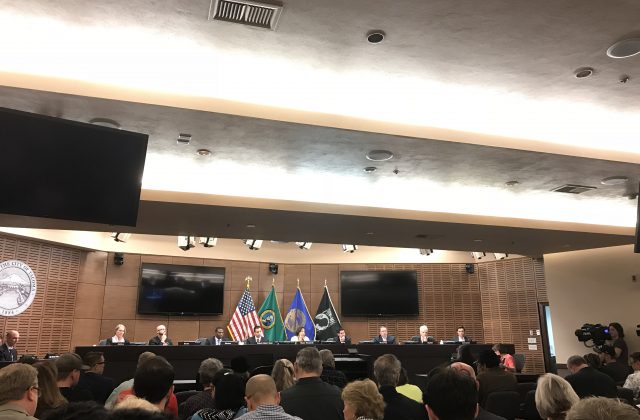When Bad Ideas Start Commuting: Will MIZ Go to Tacoma?
Rumor has it that the Tacoma City Council is now considering using Mandatory Inclusionary Zoning (MIZ) to address housing issues there. This is why it is so important to not make bad policy for whatever reason. It has a tendency to spread. As I’ve pointed out about a million times before, the idea of taxing new housing to pay for subsidized housing is bad economics and it is illegal. But politicians and some “urbanists” like MIZ because it appeases powerful non-profits and grants a tiny increase in density. The MIZ policy is notable for the fact that it stirs up angry neighbors, and that is confirmatory to urbanists, somehow that MIZ is a good idea. Meanwhile, the policy introduces uncertainty into the housing market and raises prices. Here’s the email I sent to Tacoma Councilmember Mello to persuade him to reconsider considering MIZ as an option for Tacoma.
Dear Councilmember Mello,
I understand that there has been some discussion of Mandatory Inclusionary Zoning (MIZ) for Tacoma.
Seattle has gone down that path and there are several reasons why we’ve concluded that it is not a good policy. I’d like to talk with you about this in general and offer whatever resources we have to help get you more information, including sharing thoughts from builders and developers here on how it is impacting their work.
First, MIZ often makes projects infeasible. We’ve already seen in Seattle that the very possibility of MIZ being imposed citywide has created confusion in the land market. Sellers assume that the added FAR is more valuable. Buyers think the fees make the property less valuable. The City has assumed, wrongly, that land value will drop perfectly in the same amount as the fees. That’s not happening. Meanwhile some projects simply aren’t happening or land is remaining under developed because the fees simply don’t pencil out in projects.
Second, when projects do become feasible it is because rents or prices can be raised to offset the additional construction costs and fees. That means that a few people, years from now, will be subsidized by higher rents today. This is bad policy and it serves only to make the price problem worse today for very little benefit sometime in the future with non-profit subsidized housing.
Third, MIZ is illegal under Washington law. The Constitution only allows cities to impose taxes and fees when the legislature authorizes them to do so. Cities aren’t authorized to extract value per square foot for mandatory inclusion or in lieu fees. We’re planning a legal challenge to Seattle’s proposal and think that it will eventually be sustained.
Finally, cities in the region are struggling to measure quantitatively what they hear from constituents and read in the press: housing is too expensive!
The temptation to take aging census data and compare rents and Area Medium Income as the measure of the problem is real. It yields the formulation, “X thousands of households under Y AMI are paying Z percent of their household income on housing.”
This isn’t a good way to measure this. And even if it was, the answer is to give those households cash assistance now rather than wait for very expensive units to be built sometime in the future.
These are internet numbers and you ought to have City staff dig deeper into this but you’ll get the idea:
| Average Ren | $1,156.00 |
| Median Income | $61,672.00 |
| 30 Percent AMI | $18,501.60 |
| 30 Percent/month | $462.54 |
| 50 Percent/month | $770.90 |
| Gap | $385.10 |
| Gap for 10K HH | $3,851,000.00 |
| Annual Burden | $46,212,000.00 |
| Average cost to build a unit | $250,000 |
| Cost for 10K Units | $2,500,000,000 |
The City could offset cost burdened households at very low levels of income for decades for the same price as building 10,000 units, something that would take years and billions of dollars. This is not an exaggeration. Building housing is expensive and risky. It’s better to have the market absorb most of that risk and the operating costs. At the annual cost of operation standard for housing, about $5000 per year, even when built would cost about $50 million per year to operate. And those costs as well as construction costs are rising.
Lastly, the City would be much better off using the Multifamily Tax Exemption (MFTE) program to create new, rent restricted units in the city. This incentive program creates maximum benefit for the tenants, the builder of housing, and the tax payer. The value is lower rents for people with lower incomes, inclusion in market rate projects, and finally, the efficiency of faster and less risky production of units for people that need them.
I appreciate you considering this and I hope you’re open to the thoughts of someone who has been battling against this policy for years now. It will be a disaster for Seattle if fully implemented, slowing production, raising prices, and creating very little benefit at very high costs. And it’s simply illegal. Don’t make the Seattle mistake. There are many other tools and innovations available and Tacoma can lead the region rather than following a city like Seattle that is making countless errors in housing policy.
I’d be very happy to meet and discuss this topic.


